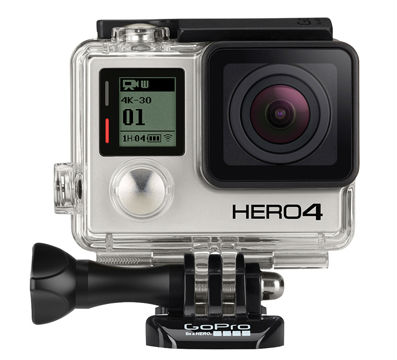 Video capture technology has come a long way in a short space of time. Up until a few years ago you had to have a specialized device to capture moving images, whereas nowadays it’s pretty much a given that your camera or smartphone will capture video and stills. And the quality, wow. High definition is pretty much the standard. There has literally never been a better time to be a filmmaker. The only downside of the video your device will produce is the sound. It’s just physically impossible to include a decent mic on most devices, so if you are planning to get serious about your filmmaking, you’re going to need to get an external mic.
Video capture technology has come a long way in a short space of time. Up until a few years ago you had to have a specialized device to capture moving images, whereas nowadays it’s pretty much a given that your camera or smartphone will capture video and stills. And the quality, wow. High definition is pretty much the standard. There has literally never been a better time to be a filmmaker. The only downside of the video your device will produce is the sound. It’s just physically impossible to include a decent mic on most devices, so if you are planning to get serious about your filmmaking, you’re going to need to get an external mic.
Today I’m going to look at 5 cameras that have awesome video capture capabilities.
The first thing I think when I hear ‘video’ is ‘GoPro’. This is the company that basically invented the wearable camera and at the same time cornered almost the entire consumer action video segment. This year saw the release of the new Hero4 range of cameras which includs the Hero 4 Silver edition which is the first GoPro to come with an LCD screen and the Hero4 Black edition which is able to shoot 4k video at 30 frames per second and 1080p HD video at 120 frames per second, which means you can shoot some pretty jaw-dropping slo-mos. Another great thing about the Hero4 range is that the new cameras are wi-fi enabled which means you can control settings and also review footage on your smart device.
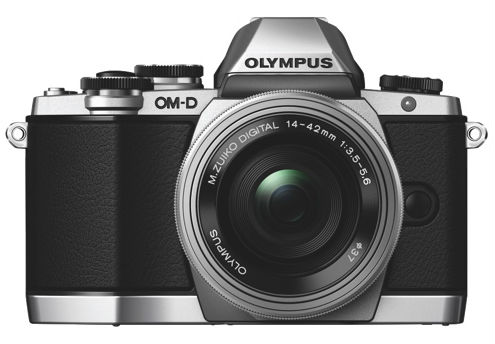 Mirrorless cameras have been making a lot of waves in the camera industry lately, so of course I’m going to have to mention a couple of those. The first model I want to recommend is the Olympus OM-D E-M10, which I had a chance to reviewearlier this year. Aside from producing great stills, this camera also shoots very nice HD videos. Ok nothing too amazing about that – as I mentioned before HD is pretty much the standard now. What is somewhat unique about the OM-D E-M10 (no, it’s not the catchy name) is the fact that it has sensor stabilization. Usually image stabilization is built into the lens, not the camera, and you have to pay a premium for it. In this case image stabilization happens right there in the camera, and it doesn’t matter what lens you use. One of the biggest problems with shooting video has always been Shaky Camera Syndrome, and most of the time you need to add some sort of rig to get steady shots. Not so with the OM-D E-M10; it’s built for steady video.
Mirrorless cameras have been making a lot of waves in the camera industry lately, so of course I’m going to have to mention a couple of those. The first model I want to recommend is the Olympus OM-D E-M10, which I had a chance to reviewearlier this year. Aside from producing great stills, this camera also shoots very nice HD videos. Ok nothing too amazing about that – as I mentioned before HD is pretty much the standard now. What is somewhat unique about the OM-D E-M10 (no, it’s not the catchy name) is the fact that it has sensor stabilization. Usually image stabilization is built into the lens, not the camera, and you have to pay a premium for it. In this case image stabilization happens right there in the camera, and it doesn’t matter what lens you use. One of the biggest problems with shooting video has always been Shaky Camera Syndrome, and most of the time you need to add some sort of rig to get steady shots. Not so with the OM-D E-M10; it’s built for steady video.
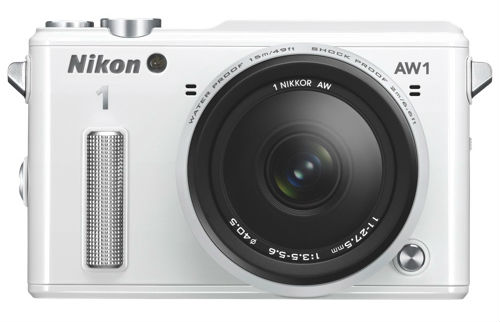 Another mirrorless I want to recommend is the Nikon AW1. Again, the actual video quality isn’t particularly special, although it can shoot small (320×120) videos at 1200 frames per second. But what sets the AW1 apart for me is that it is completely waterproof to a depth of 49 feet. And the great thing about shooting underwater is that you don’t need a stabilization rig because the water itself acts as a dampener. Another nice feature of the AW1 I want to mention is the fact that it can shoot stills at an incredible 15 frames per second. That’s fast.
Another mirrorless I want to recommend is the Nikon AW1. Again, the actual video quality isn’t particularly special, although it can shoot small (320×120) videos at 1200 frames per second. But what sets the AW1 apart for me is that it is completely waterproof to a depth of 49 feet. And the great thing about shooting underwater is that you don’t need a stabilization rig because the water itself acts as a dampener. Another nice feature of the AW1 I want to mention is the fact that it can shoot stills at an incredible 15 frames per second. That’s fast.
In terms of a camera that shoots HD video, but comes in at a lower price point, I’m going to recommend the Panasonic Lumix DMC-FZ200. This is a camera that was definitely designed with both still and video shooting in mind, as opposed to a stills camera with video clumsily thrown in. One of the advantages that cameras have over camcorders is that they can take advantage of the wide aperture capabilities of 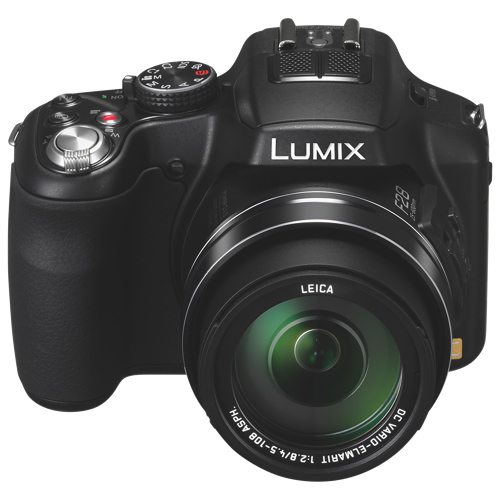 good lenses. When you shoot at wide apertures (lower aperture number) you get a shallower depth of field, which means less of the image is in focus. This gives you really nice blurred backgrounds which help your subject to stand out. I like to call it the ‘art factor’. The Lumix DMC-FZ200 comes with a 24x zoom lens which is able to shoot at f/2.8 right throughout the range. This is pretty impressive and you can get some really cool shots at f/2.8. You can also manually adjust your exposure while shooting which a lot of cameras can’t do, and you can manually adjust your focus too which is great because autofocus can be a bit of a drag when shooting video because it tends to jump around quite a bit. The DMC-FZ200 also has an external mic input which allows you to connect an external mic and get much better audio quality. And you can add a LED light bank to the hotshoe on top of the camera if needed. Finally the DMC-FZ200 has a feature called POWER O.I.S. (all-caps courtesy of the manufacturer) which gives you that much-needed image stabilization I talked about earlier.
good lenses. When you shoot at wide apertures (lower aperture number) you get a shallower depth of field, which means less of the image is in focus. This gives you really nice blurred backgrounds which help your subject to stand out. I like to call it the ‘art factor’. The Lumix DMC-FZ200 comes with a 24x zoom lens which is able to shoot at f/2.8 right throughout the range. This is pretty impressive and you can get some really cool shots at f/2.8. You can also manually adjust your exposure while shooting which a lot of cameras can’t do, and you can manually adjust your focus too which is great because autofocus can be a bit of a drag when shooting video because it tends to jump around quite a bit. The DMC-FZ200 also has an external mic input which allows you to connect an external mic and get much better audio quality. And you can add a LED light bank to the hotshoe on top of the camera if needed. Finally the DMC-FZ200 has a feature called POWER O.I.S. (all-caps courtesy of the manufacturer) which gives you that much-needed image stabilization I talked about earlier.
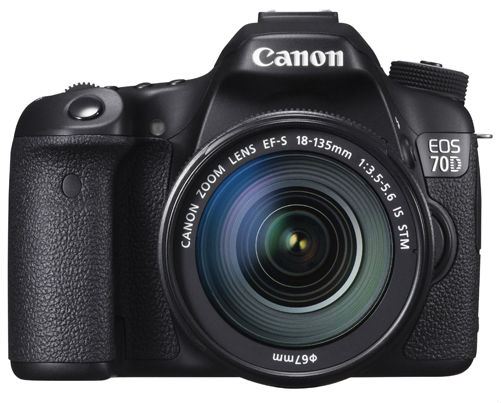 Finally I’m going to recommend a video-oriented DSLR, the Canon 70D, which was heralded as a game changer for videography when it was released last year. It was the first camera to incorporate the new ‘Dual-Pixel’ CMOS sensor which gives it enhanced focus capabilities. It has a nice pop-out, rotatable LCD screen, which videographers really like. The great thing about this screen though is that it is touch sensitive and allows you to choose your focus point while shooting just by tapping the screen. And instead of jumping to the new focus point as quickly as possible, it actually creates a nice, smooth, cinematic transition which is very pleasing to watch. The new sensor also allows for much improved autofocus tracking. Canon also has a special focus motor in some of it’s lenses (designated by the letters STM) which allows for totally silent focussing. If you want image stabilization though you’ll have to use a lens which has stabilization onboard (designated by the letters IS). I have a couple of tips that I learned from videographers however that will work in a pinch however. The first is simply to put the strap around your neck and hold the camera as far away as possible so that the strap is in tension. This way your upper body acts as your stability rig. The other thing you can do is mount your camera on a tripod with the legs in the retracted position. The weight of the tripod pulling downwards helps to dampen out little movements.
Finally I’m going to recommend a video-oriented DSLR, the Canon 70D, which was heralded as a game changer for videography when it was released last year. It was the first camera to incorporate the new ‘Dual-Pixel’ CMOS sensor which gives it enhanced focus capabilities. It has a nice pop-out, rotatable LCD screen, which videographers really like. The great thing about this screen though is that it is touch sensitive and allows you to choose your focus point while shooting just by tapping the screen. And instead of jumping to the new focus point as quickly as possible, it actually creates a nice, smooth, cinematic transition which is very pleasing to watch. The new sensor also allows for much improved autofocus tracking. Canon also has a special focus motor in some of it’s lenses (designated by the letters STM) which allows for totally silent focussing. If you want image stabilization though you’ll have to use a lens which has stabilization onboard (designated by the letters IS). I have a couple of tips that I learned from videographers however that will work in a pinch however. The first is simply to put the strap around your neck and hold the camera as far away as possible so that the strap is in tension. This way your upper body acts as your stability rig. The other thing you can do is mount your camera on a tripod with the legs in the retracted position. The weight of the tripod pulling downwards helps to dampen out little movements.
So there you are, 5 awesome cameras for shooting video. If have any questions feel free to leave a comment below.




